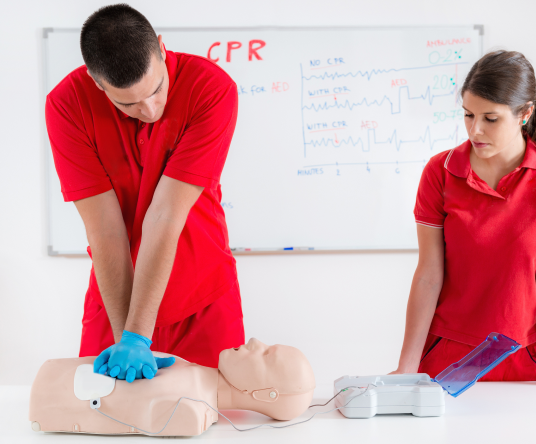Chapter 10: AED
An Automated External Defibrillator (AED) machine shocks the heart and enables it to restart with a normal rhythm. The AED device will instruct you step-by-step, and will tell you to push a button if it determines that a shock is required.
A diagram will show you where to place the pads and when to restart compressions. If a second rescuer is present, he / she can help to attach AED pads while the first rescuer continues to perform CPR.
AED Training Video:
Steps For Using AED:
- Turn the AED “on” and follow the instructions given through voice commands. They should be self-explanatory.
- An AED device should only be used on adults and children who are 8-years and older.
- The survival rate for a cardiac emergency patient increases to almost 30-70 percent if an AED is used in a timely manner.
- Do not touch the person while the AED is analyzing. When the device is defibrillating you could be shocked, so be careful.
- Do not use an AED on a person who is in contact with water. Be sure to move him or her away from the puddle of water, swimming pool or rain before defibrillating.
- An AED can be used on patients with an implant-device.
- Before defibrillating, take off visible medication patches from the person using disposable gloves.
- Shock pads should be used on clear skin (shave those parts if necessary. Ensure that the chest is not wet.)
- Never turn the AED off or remove the pads. The machine will instruct you to begin CPR after shock is delivered.
- Child AED Usage: AED will instruct you to use child pads or a child key / switch.
- If child pads are not available, use adult pads.
- If child pads are touching, place one pad in the front of the chest, and one on the back of the chest.
*Remember if an AED is not present, start CPR immediately!
